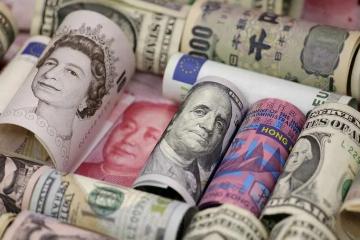China-U.S. Treasury Yield Differential Holds Steady
Advertisements
In the financial markets today, a troubling development has emerged: the yield spread between 10-year government bonds from China and the United States has narrowed significantly, with moments of inversion where U.STreasury yields surpassed those of their Chinese counterpartsThis inversion is not merely a statistical anomaly; it represents a potential warning sign for both economies, especially amid the backdrop of rising interest rates in the U.Sthat could spark a renewed currency conflict between the two nations.
The implications of this narrowing yield spread are profound and multifaceted, presenting risks that can ripple through both economiesTo begin with, when U.STreasury yields exceed those of China, it creates an attractive environment for foreign capital, particularly speculative investments, to flow out of China in search of higher returnsCapital naturally gravitates towards better yields, and this flight could exert downward pressure on the Chinese yuan, leading to further depreciation
Advertisements
Such a scenario may trigger a self-reinforcing cycle that could have severe economic repercussions.
Historical precedents underscore the dangers of this situationFrom mid-2018 to late 2019, a period marked by rising U.Sinterest rates coincided with a contraction in the China-U.Syield spreadDuring this time, significant capital outflows were observed, which in turn pressured the yuan downwardThe yuan depreciated by a staggering 12% against the dollar between April 2018 and October 2019, creating distress within the domestic economy and amplifying inflationary pressuresThis historical context serves as a cautionary tale, highlighting the potential consequences of a similar scenario unfolding today.
The ramifications of such currency depreciation are extensiveFor instance, when the yuan weakens, the prices of essential commodities—such as energy and core industrial materials—tend to rise
Advertisements
This increase translates into higher operational costs for businesses, squeezing profit margins and prompting many companies to cut jobsThe unemployment rate can spike significantly during such downturns; for example, a rise from approximately 4% to over 5% in a short span can have damaging effects on consumer confidence and spending powerInflation, measured by the Consumer Price Index (CPI), can also escalate, hitting levels of 4-6%—the highest rates seen since 2012. Such inflationary pressures further complicate the economic landscape, creating a feedback loop that can stifle growth.
The second major concern arising from a narrowed yield spread is the added complexity it introduces to China's ongoing efforts to stabilize its economy, especially as it continues to grapple with the aftereffects of the pandemicThe Chinese government has been contemplating more liberal monetary policies to stimulate growth, including lowering loan rates and increasing credit availability for businesses
Advertisements
However, with the prospect of rising U.Sinterest rates, the feasibility of reducing rates in China diminishes significantlyLowering rates could exacerbate capital flight and further weaken the yuan, putting the country in a precarious position.
Historically, China has avoided implementing rate cuts during periods of narrowing yield spreads since the year 2000. Instead, it has commonly employed liquidity-enhancing measures, such as cuts to the reserve requirement ratio for banksThe current situation may compel Chinese policymakers to reassess their strategies critically, moving away from traditional monetary easing and adapting to the evolving dynamics of the marketThis reassessment is crucial for maintaining economic stability in the face of external pressures.
Additionally, the narrowing yield gap is likely to instigate volatility in the stock marketsCapital outflow pressures, combined with shifting investor sentiment, often lead to declines in market performance
- Mercedes-Benz: Embracing a New Era
- Intel Shares Surge 9.5%
- China-U.S. Treasury Yield Differential Holds Steady
- The UK Bond Market May Continue to Suffer
- How High Will U.S. Treasury Yields Soar?
Historical patterns show that when foreign investors begin to withdraw their funds, it triggers alarm bells among local investors, prompting them to follow suitSuch behavior can result in significant fluctuations and declines in stock prices, further complicating the investment landscape.
In summary, the convergence of rising U.Sinterest rates and a narrowing yield spread between China and the U.Screates a precarious environment for economic management in 2022. Indicators suggest that this situation could culminate in higher unemployment rates, moderate inflationary pressure, and increased volatility in the stock markets, presenting formidable challenges to sustained economic growth.
What is unfolding is not just an economic challenge but a complex duel between the yuan and the dollarThis economic chess match sees Wall Street at odds with the burgeoning Chinese equity market, each move carrying significant weight

Despite these challenges, there remains a silver lining: China’s robust manufacturing base and substantial foreign exchange reserves could serve as a bulwark against the pressures of rising U.Sinterest rates and the tightening yield spread.
However, this optimism must be tempered with cautionPreparing thoroughly to mitigate potential losses and navigate the volatile outcomes of this looming economic tempest is paramountInvestors and policymakers alike need to remain vigilant, closely monitoring these developments to make informed decisions in a rapidly changing financial landscapeThe stakes are high, and the balancing act between maintaining economic stability and pursuing growth will require deft maneuvering and strategic foresight.
As the global economic environment continues to evolve, the interplay between these two major economies will be criticalObservers will be keenly watching how China responds to the pressures of capital flight and currency depreciation, as well as how the U.S